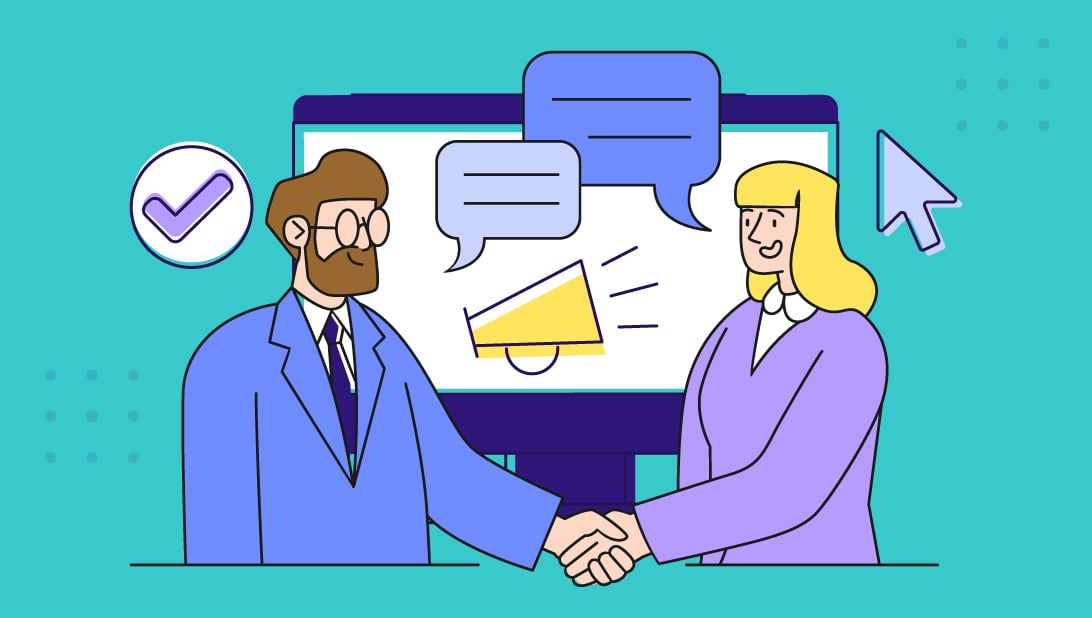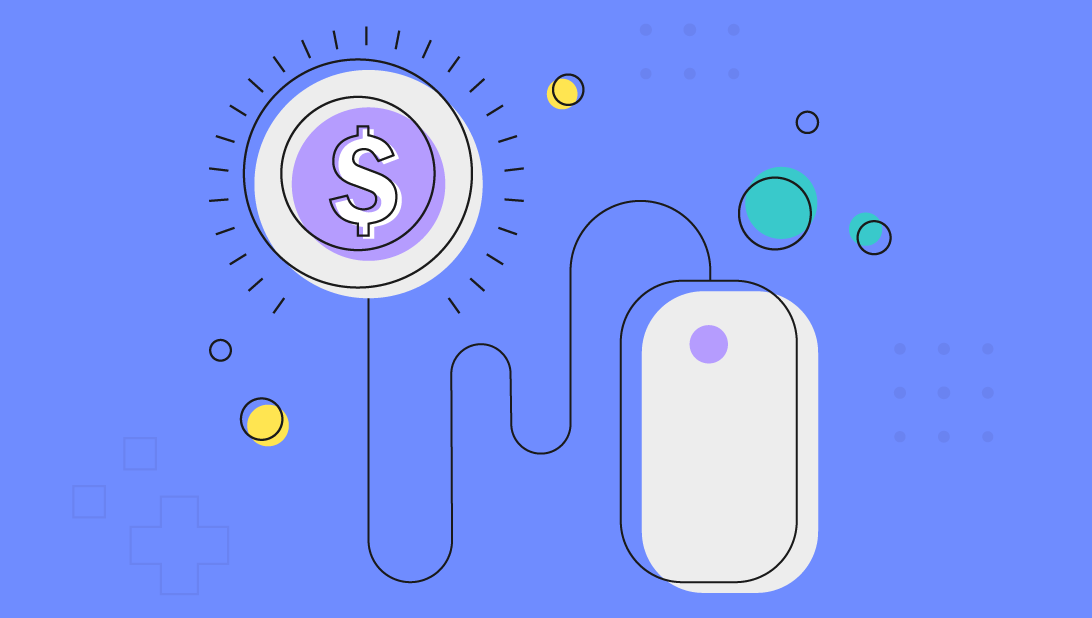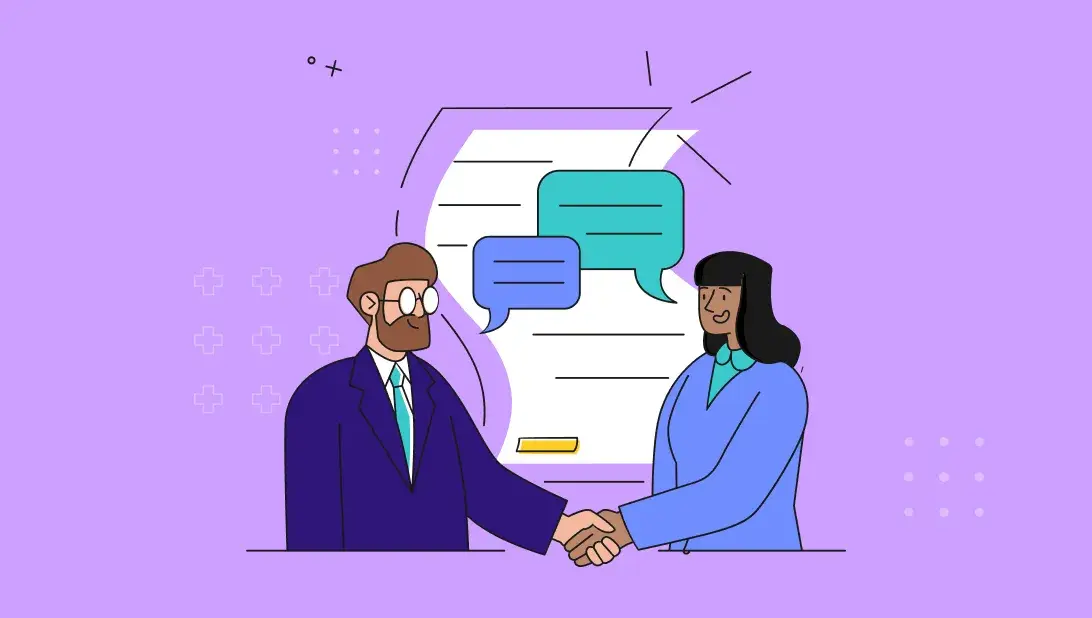



The B2B SaaS industry is fast evolving. As buyer expectations shift and technologies mature, companies must stay agile, adapt to the latest B2B marketing trends, and embrace new tactics to drive engagement and growth.
Let’s explore the top B2B marketing trends shaping the SaaS industry and how to apply them to your strategy to reach the right audience — with the right message at the right time.
B2B buyers expect personalization similar to B2C experiences. Yet, adapting to this trend has been challenging for B2B SaaS companies because of lengthy sales cycles, complex buying group dynamics, and high-stake decisions. The good news is that AI technology makes it possible to implement hyper-personalization at scale.
AI-driven personalization tools can help you leverage prospect and customer information (e.g., behavioral data, firmographics, past interactions, and intent signals) to tailor messaging, content, and outreach across the entire buyer journey — going beyond [FirstName] tokens in emails to deliver relevant and meaningful experiences.
B2B marketers may also use AI-driven personalization software to serve dynamic website content based on visitor profiles, trigger email sequences relevant to specific buying stages, recommend personalized demos, webinars, or resources, and prioritize high-potential accounts with predictive lead scoring.
Integrate AI-driven personalization technologies with your CRM platform and implement tools to automate real-time personalization. Use conversational AI to scale one-on-one experiences (more on that soon). Additionally, gather insights from sales and customer success teams to improve your AI model’s targeting and accuracy.
You may notice that AI-generated articles are flooding the internet, and mediocre content no longer captures your attention. The same goes for your audience. B2B buyers don’t want more information — they seek high-quality, relevant, and insightful content. That’s why thought leadership has become one of the top B2B marketing trends.
To build trust and establish authority, shift your attention from quantity to quality. Invest in original insights, expert perspectives, industry-specific viewpoints, and deep dives that bring new insights to your audience. Use content to establish your positioning as a trusted advisor instead of just another vendor.
Here are some ideas for creating thought leadership content: Promote unique points of view (POVs) by collaborating with internal subject matter experts (SMEs). Use data-backed insights from your platform to produce in-depth reports. Also, repurpose long-form content across channels (e.g., videos and LinkedIn posts) to maximize your ROI.
Build a content engine that includes your SMEs (e.g., interviews, ghostwriting). Gather proprietary data or customer stories to create original, high-value content. Identify themes your audience cares about and distribute thought leadership pieces through exec social profiles, newsletters, and earned media to broaden your reach.
Buyer enablement is one of the top emerging B2B marketing trends because B2B SaaS buyers are more independent than ever. Wynter found that 91% of decision-makers attending a sales meeting are already familiar with the vendor. Your marketing strategy must go beyond attracting interest to empowering buyers to make decisions.
So, what does buyer enablement look like in practice? It flips the script from pushing messaging to provide the tools, content, and guidance buyers seek along the customer journey. For example, you may offer interactive product tours, ROI calculators, and educational content mapped to each stakeholder’s role.
Meanwhile, a “black box” approach to pricing no longer works. B2B tech buyers expect transparent pricing pages and comparison sheets. Additionally, most prefer to self-serve throughout the decision-making process. As such, you should provide access to demos, FAQs, and use cases to empower them with knowledge about your solution.
Support effective buyer enablement with a robust content strategy to provide relevant materials for each customer lifecycle stage. Build interactive tools like ROI calculator or assessment quizzes to help buyers visualize value. Also, partner with your sales team to create assets that will help accelerate decision-making and close deals.
Today’s B2B buyers are overwhelmed with marketing materials promoting similar features and benefits. Yet, software is an abstract product with functionalities that are often hard to explain through words and images alone. As such, B2B marketers must find ways for prospects to experience their solutions first-hand.
PLG has become one of the top B2B marketing trends because it lets the product sell itself. Users get direct access to value before talking to sales or signing up for paid plans. Freemium models are the most popular tactic for activating this strategy. They help lower the barrier to entry, build trust, and accelerate time-to-value to drive sales.
This strategy also helps you drive revenue through upselling by including in-product nudges to highlight premium features and leverage usage-based onboarding flows to drive engagement and help users realize value.
To boost revenue through a PLG strategy, use in-app analytics and product-led marketing tools to orchestrate and guide user journeys. Support freemium users with onboarding content that also promotes premium features. Moreover, ensure alignment among product, marketing, sales, and customer success to drive upgrades.
Account-based marketing (ABM) has long been a staple in B2B marketing, yet companies often find themselves casting too wide a net and spreading their resources thin. How do you identify in-market accounts seeking solutions and browsing competitor websites to deliver hyper-relevant messaging when and where it matters most?
B2B buyer intent data is the secret weapon to help you surface accounts researching topics related to your solution across third-party sites, review platforms, and your digital properties. It helps you reach buyers early in their journey, focus resources on accounts most likely to convert, and deliver messaging that aligns with their pain points.
Obtain B2B buyer intent data via vendors like 6sense, Bombora, or ZoomInfo to identify accounts showing signs of interest. Use this software to track content consumption, keyword usage, interactions with competitors’ online properties, etc. You may also layer intent data over your CRM data to prioritize outreach with tailored campaigns.
To maximize the power of B2B buyer intent data, build a tiered ABM playbook based on intent levels (i.e., cold, warm, and hot) and design personalized campaign flows triggered by intent signals. Also, equip sales teams with real-time insights on what each target account is researching to ensure timely outreach.
With tightening global privacy regulations, rising buyer skepticism, and an increasing demand for transparency, marketers must rethink how they collect and use customer data. Prioritizing consent and privacy isn’t just for meeting legal requirements — it’s essential for building trust and protecting your reputation.
A privacy-first approach is one of the trickier B2B marketing trends because you must design brand experiences that are both compliant and customer-centric to build trust-based relationships. Yet, it’s worth the effort because clean, permission-based data is often more accurate and actionable than purchased lists.
Instead of relying on third-party cookies for targeting, implement contextual and intent-based strategies to reach your audience. Invest in zero- and first-party data collection through gated content, chatbots, and progressive profiling. You may also implement a consent management platform (CMP) to give users control over their data.
Start by auditing your data collection practices for compliance and clarity. Build campaigns around value exchanges, giving users a reason to share their information. Also, invest in a customer data platform (CDP) to centralize, clean, and activate zero and first-party data to support your strategy.
B2B buyers crave immediate and personal interactions in an era of forms and automation. However, scaling real-time, one-to-one conversations to engage prospects, qualify leads, and remove friction from the buyer journey has been challenging. The rise of conversational marketing, supported by AI chatbots, has made it possible.
Conversational marketing helps collect prospect data, answer product and pricing questions, route inquiries to the right sales rep, and book demos on the spot, turning your website into a round-the-clock sales channel. Additionally, conversational channels help improve conversion rates by streamlining the user flow.
So, how do you get the most out of this method? Use AI-powered chatbots to help qualify website visitors and deliver instant, tailored responses. Integrate scheduling software with live chat for real-time sales team handoffs. You may also personalize responses based on user behaviors and contextual information to facilitate the buyer journey.
Choose chatbot software that integrates with your CRM and marketing automation platform (MAP) to personalize messages and track engagement. You should also design conversational flows around key pages (e.g., pricing, product) and train sales teams to jump in when buyers from high-value accounts engage in chat.
Today’s long, non-linear B2B buyer journey means you can’t attribute conversion to a single action (e.g., filling out a form) or channel. Decision-makers interact with brands via multiple touchpoints over time, and multi-touch attribution (MTA) is essential for marketing teams to prove ROI and identify what works across the funnel.
MTA models track and assign value to every interaction a prospect has with your brand, such as ad views, white paper downloads, and demo requests. Instead of guessing which campaigns drive revenue, you get a comprehensive picture of how buyers engage with your brand via content, email, social, search, events, and more.
The good news is that you don’t have to do the number-crunching yourself. Attribution reporting capabilities like those offered by HubSpot apply weighted attribution models (e.g., linear, U-shaped, time decay) to reflect real buyer journeys. The insights help you visualize buyer paths and tie marketing activities to closed-won opportunities.
Effective MTA campaigns start with defining the most relevant model based on your sales cycle and deal size. Tag all marketing and sale channels properly to collect data and build dashboards to align marketing KPIs with revenue outcomes. Then, use the data insights to support continuous improvement.
Today's B2B buyers are informed, selective, and in control. SaaS marketers must stay current with B2B marketing trends and implement strategies to activate data insights, AI-driven personalization, thought leadership content, buyer enablement tactics, conversational marketing, privacy-first practices, and more.
Incorporating these B2B marketing trends into your playbook and ensuring they work synergistically to maximize outcomes requires expertise and constant fine-tuning.
Partnering with an experienced SaaS marketing agency like Spot On allows you to stay agile and implement new strategies quickly to adapt to shifting market demand and customer expectations. Book a meeting to see how our holistic approach helps you set the foundation and connect the dots to execute the latest tactics without losing sight of your big-picture goals.


Rebecca Graves co-founded Spot On in 2012. As a partner and leader of client services, she takes immense pride in being in charge of “client happiness.” The role allows her to wield her problem-solving skills while fostering big-picture perspectives and team building. Rebecca’s more than 35 years of experience have equipped her to translate strategic planning expertise for the advancement of tech companies transforming the healthcare, financial, and legal industries.
Get the latest and greatest posts sent straight to your inbox.


